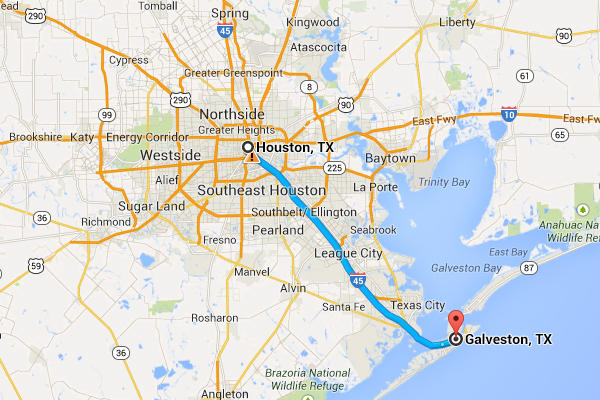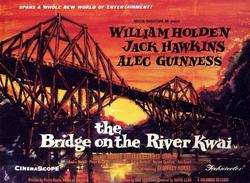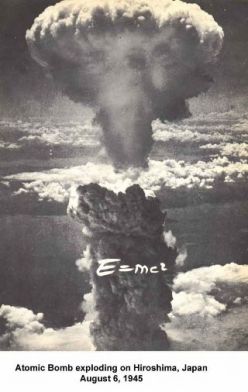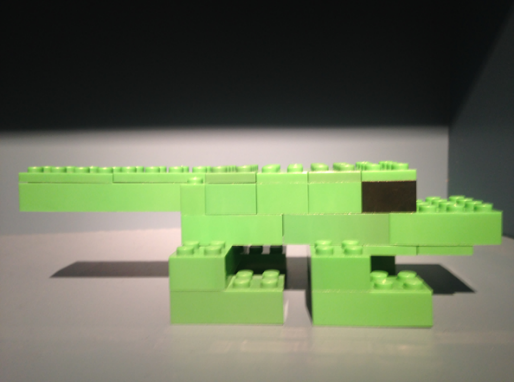Editor’s Note: This is part two of a three-part series exploring the history and significance of D-Day as we approach the 70th anniversary of the battle. Click here to read part one. For information on D-Day: Normandy 1944, the 3D film now showing in the Wortham Giant Screen Theatre, please visit us online.
“I have full confidence in your courage, devotion to duty and skill in battle. We will accept nothing less than full victory!” – General Dwight D. Eisenhower, June 6, 1944.
With these words, General Dwight D. Eisenhower ended his message to the troops as they headed for the beaches of Normandy on D-Day, June 6th, 1944.
Once the decision had been made at the Trident Conference to open a second front and invade Western Europe, preparations needed to be made to ensure the mission’s success. This involved deciding when and where to land, devising measures to deceive the Germans, and working out all the logistics to make these plans work.
As to the “where,” the German High Command assumed that the Pas de Calais in Northern France was the likeliest place for an Allied invasion. This was not unreasonable. At 21 miles, it marks the shortest distance between German-held territory and Allied-held territory. To put things in perspective, this distance of 21 miles is slightly less than the length of the causeway across Lake Pontchartrain, north of New Orleans.
The Germans looked at this spot as a jumping off point for their own invasion of England. One photo shows German officers, including Herman Goering, standing on the beach at Pas de Calais, looking at the white cliffs of Dover. That was as close as they would ever get.

Lake Pontchartrain, Louisiana. The city of New Orleans is visible to the south of the lake. The causeway is the straight line crossing the lake, covering a distance equal to that between Calais, northern France and Dover, England. (Image: Wikimedia)
The Allies selected Normandy for various reasons. It had good beaches, which were protected from western gales by the Cotentin Peninsula, or Cherbourg Peninsula. While it was further away from England than Pas de Calais, Normandy was also not the place where the Germans expected the landings to happen. The beaches in Normandy remained within easy reach of fighter airplanes, guaranteeing that there would be sufficient air cover to protect the troops when they hit the beach. By 1944, the German air force was no longer as powerful as it once had been.
As to when to invade Normandy, the Allies relied on tides, available moonlight, and good weather. Coming in with full knowledge of the tides would allow the boatmen of the landing craft to get close enough to the beach, while still being able to avoid the extensive belt of beach obstacles. In 1944, it was determined that optimum conditions would exist toward the end of May.
Once a “where” and “when” were decided upon, it became necessary to deceive the Germans. An operation this size could not remain hidden. The Allies decided that the best course of action was to make the Germans look the wrong way. The Allied deception plan – known as “Operation Bodyguard” — employed various schemes to mislead the Germans.
Fake infrastructure and equipment (including inflatable replicas of tanks and vehicles) was used to simulate non-existing army units. Radio traffic was generated to reinforce that impression, with messages exchanged among these make-believe units. Well known military figures, most famously General Patton, were also part of the deception plan. General Patton took on a high visibility profile in Southeast England, the area where the non-existing First United States Army Group was supposed to have set up camp. Ghost armies would continue to play a role during the remainder of the war.
The Allies also made use of diplomatic channels, double agents and other very creative ruses to leak tidbits of information to deceive the Germans into believing the main invasion would happen anywhere but Normandy, and that any action there would be part of a diversion and nothing more. Eventually, after an agonizing delay because of bad weather, the invasion was launched. D-Day was underway.
Wave after wave of airborne units had gone in ahead of the main body. Their job was to secure bridges, and secure the flanks of the invasion area. The invasion area was 50 miles wide; a mind-boggling distance roughly equal to what separates Houston from Galveston, or Washington, D.C. from Baltimore.
 American, British, Canadian and other Allied forces came ashore that day facing a well-entrenched enemy. For more than a year, Marshal Rommel had been in charge of fortifying the mainland against an invasion they knew would come one day. A huge workforce had been employed to build strong points from Norway to the border with Spain — a distance of about 1,500 miles. A giant German version of the French Maginot line, these fortifications were named the Atlantikwall.
American, British, Canadian and other Allied forces came ashore that day facing a well-entrenched enemy. For more than a year, Marshal Rommel had been in charge of fortifying the mainland against an invasion they knew would come one day. A huge workforce had been employed to build strong points from Norway to the border with Spain — a distance of about 1,500 miles. A giant German version of the French Maginot line, these fortifications were named the Atlantikwall.

Fortified coastline of German-occupied Europe, known as the Atlantikwall, shown in green (Image: Wikimedia)
From 1943 to 1944, bunkers, observation points and gun emplacements were constructed at a feverish pace. Among these fortifications was a series of bunkers and gun emplacements at a location called Pointe du Hoc, a rocky promontory overlooking Omaha Beach. Allied intelligence surmised that these strong points sheltered huge 155 mm artillery pieces which, it was feared, could wreak havoc on the landing beaches. These guns had to be neutralized, and the U.S. Army Rangers were selected to do the job.

Pointe du Hoc bunker, remains of charred ceiling beams, evidence of the intense fighting that took place here (Photo: Dirk Van Tuerenhout).
Intense fighting ensued. Bunkers were attacked with all available weapons, including flamethrowers as well as naval artillery. Much to their surprise, the Rangers established that the artillery, thought to have been in the emplacements, had been moved inland. They were able to locate and destroy them, as well as a huge ammunition dump nearby. In doing so, they saved a lot of lives.
The commanding officer of the Rangers was Colonel James Earl Rudder. He was wounded during the attack, but survived and eventually became the sixteenth President of Texas A&M University. Among the huge armada of ships firing at the German fortifications was the USS Texas. She sailed up and down the coast, firing at Pointe du Hoc as well as the coastal guns defending the port of Cherbourg. Some of the Rangers wounded during the Pointe du Hoc operation were treated on the USS Texas.
By the end of the day, Allied forces had become sufficiently entrenched on the Normandy coast. It would take another year before the “1000-year Reich” came crashing down. That part of the story will be covered in the third and final blog on this topic.
The Houston Museum of Natural Science’s Wortham Giant Screen Theatre is now showing D-Day: Normandy 1944. The film is running exclusively at HMNS in the Houston-Galveston area through November 11.
Click here to read the next in this series, D-Day, Part III: “We are coming by day and by night”
Local support is provided by Gallery Furniture and IBERIABANK.












